We're calling it: the 'emotional support' kitchen is 2023's biggest design trend
Here's how yours could make you happier

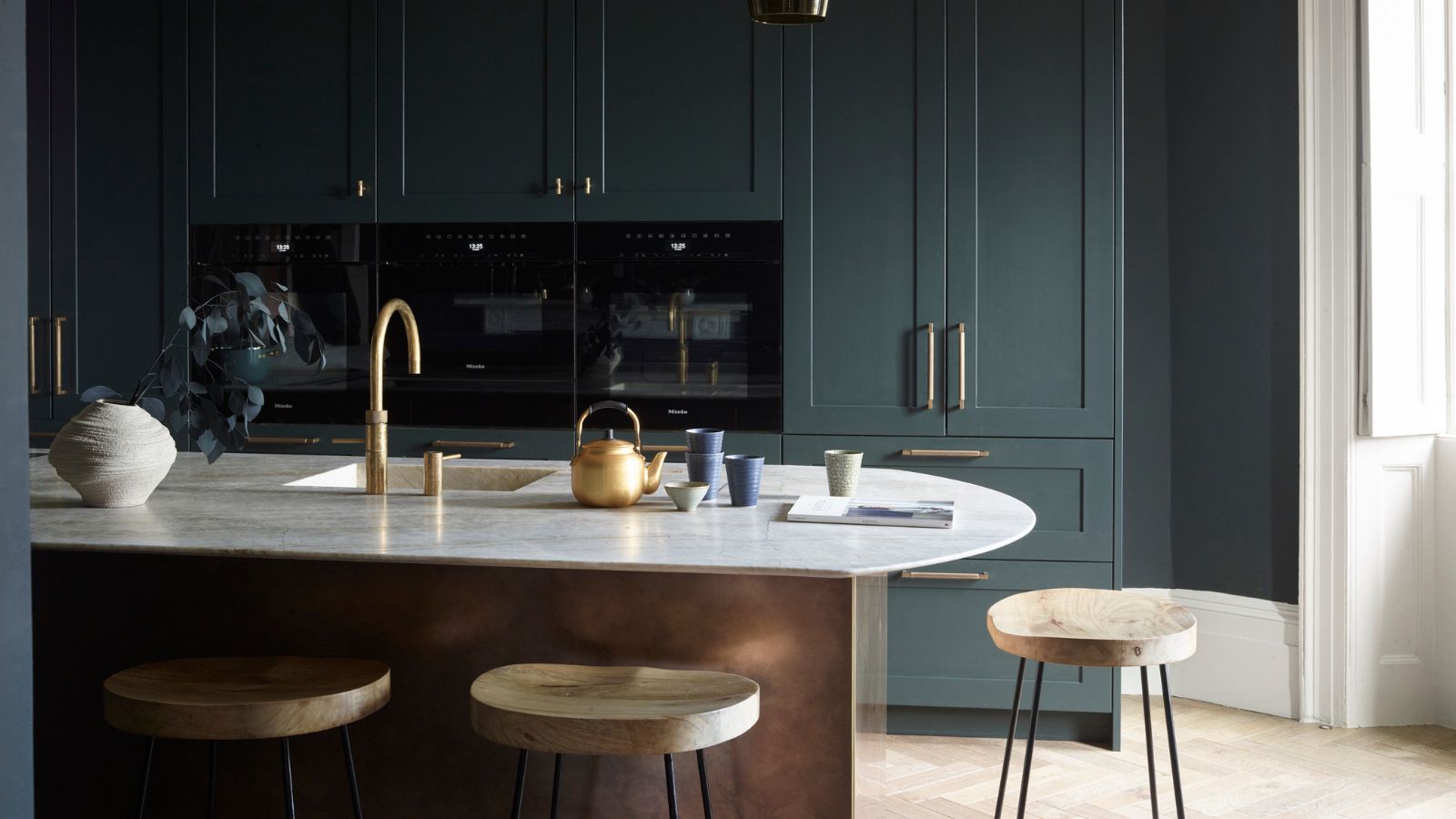
There's no denying that since the pandemic, how we use our homes and how they make us feel has really come into sharp focus.
And this focus is sharpest when it comes to designing a kitchen. It is, after all, the heart of the home, where many of spend the most time. And while it has to be functional, and of course we want it to be beautiful, it's got to make us feel good too.
So, how to create a kitchen design, through color choices, layout, materials and lighting, that appeals to our emotions, positively?
We think this Lay On Classic & Urbo kitchen designed by Sam Hart, Senior Design Consultant, at Roundhouse London captures the spirit of the 'emotional support' kitchen. Below, we explain why this is more than just a kitchen trend but a permanent shift, while Sam explains her design choices.
1. Create coziness with the same color on walls and cabinetry
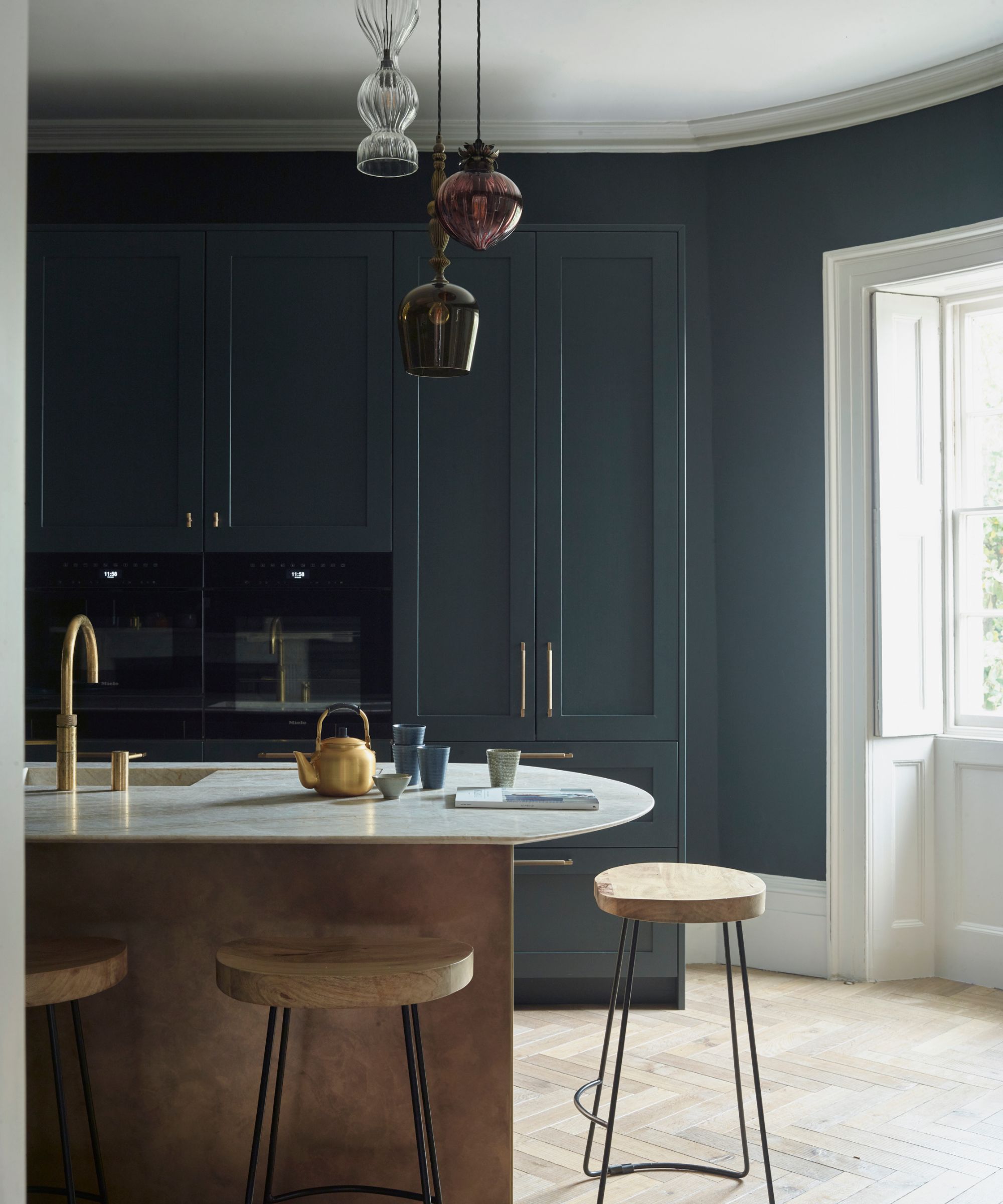
Choosing a dark kitchen color might seem counter-intuitive but it is cocooning and atmospheric, perfect for kitchens you mainly use in the evening, and especially for dinner parties, though we would advise that you need to ensure kitchen lighting is well planned for it not to feel gloomy. Think warm bulbs and shades.
'This kitchen is painted in Farrow & Ball ‘Studio Green’. When applied to a surface, the rich pigments respond extraordinarily to all types of light. The deep green hue appears almost black when the room is dimly lit,' says Sam.
'The purpose of using a color like this on the walls and cabinetry is to create a cocooning feeling. In the evening time, the rich hue creates the perfect atmospheric backdrop for hosting drinks. While during the day, the rooms large paned windows allow enough light in to avoid the space from feeling claustrophobic and the greenery from just outside is echoed within.'
Design expertise in your inbox – from inspiring decorating ideas and beautiful celebrity homes to practical gardening advice and shopping round-ups.
2. Conjure glamor and warmth with antique brass
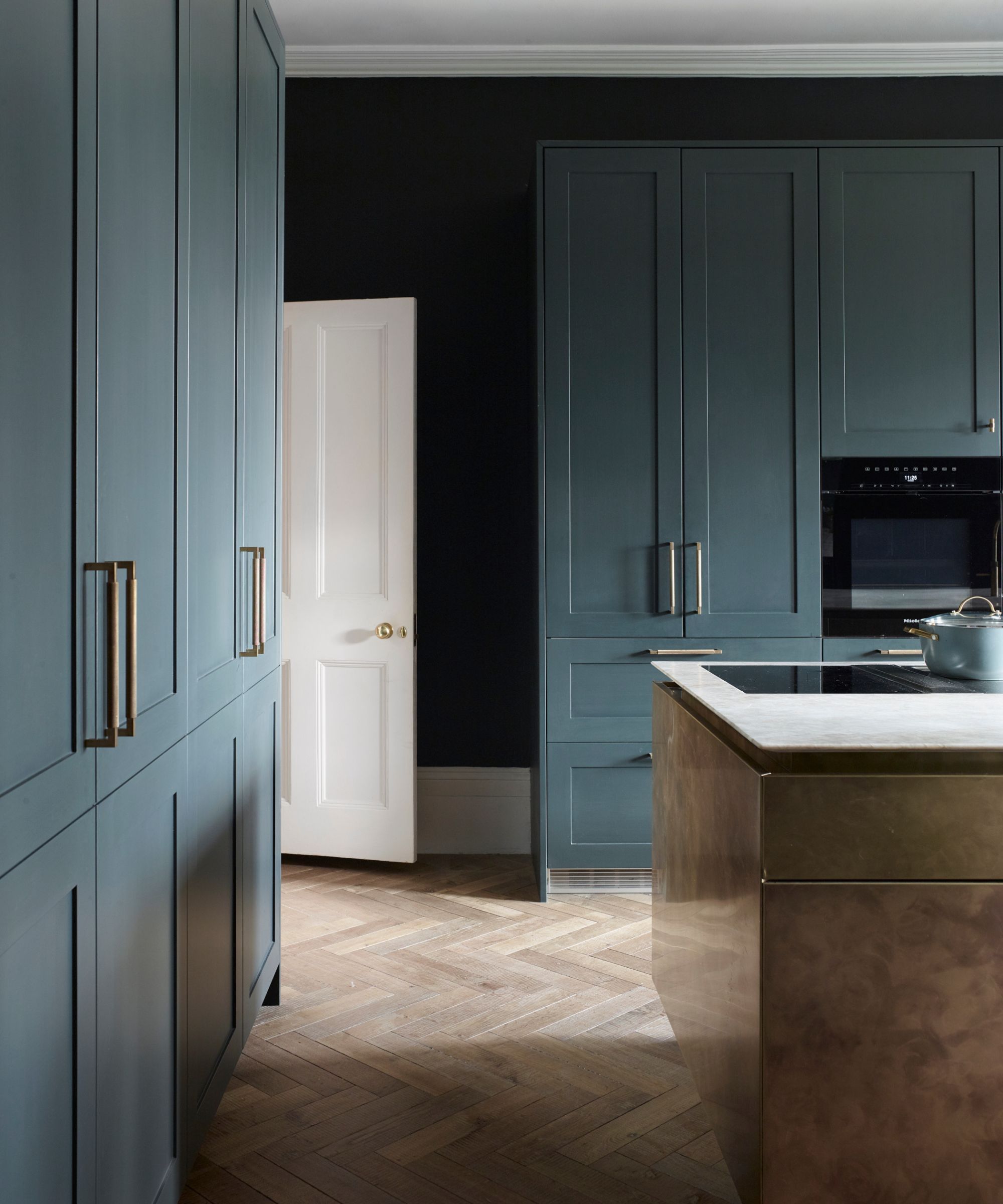
Antiqued and warm metallics aren't just glamorous looking; they also add a touch of welcoming warmth to a kitchen. This is a must if you are choosing a dark or cool color for your kitchen units, walls or flooring.
'The signature antique brass metal wrap island is real brass sheet material which is folded and welded to the shape of a door. The patination is created by a light acidic formula being hand applied to create an individual hand-crafted finish. Once this effect has been created on the surface it is sealed with a clear lacquer,' says Sam.
'The patina created using this method gives the warm brass a beautiful texture, character and the feeling of aging over time; elements that are essential for creating a comfortable home.'
3. Add cool elegance with natural stone

Kitchen countertop ideas are a dominant feature, so they have to be alluringly beautiful. And there's no doubt that the textures, patinas and colors within natural materials make us feel more enriched than anything man made ever could.
'Using natural stone is a great way to create opulence in the kitchen. The nuances in the stone make each slab unique. The veining in each slab showcases a myriad of colors that can be introduced in other design elements to pull together the scheme.
'In this case the pink and golden tones in the Leathered Taj Mahal Quartzite are complemented by the warm brass and intense green. The leathered effect enhances the tactile, organic qualities of the stone.
'The shark nose edge detail makes the impressive slab look neat and elegant. This delicate detail helps to balance the industrial quality of the brass on the island to create a structure that looks like a beautiful piece of furniture in the room,' says Sam.
4. Soften hard lines with curves in the kitchen
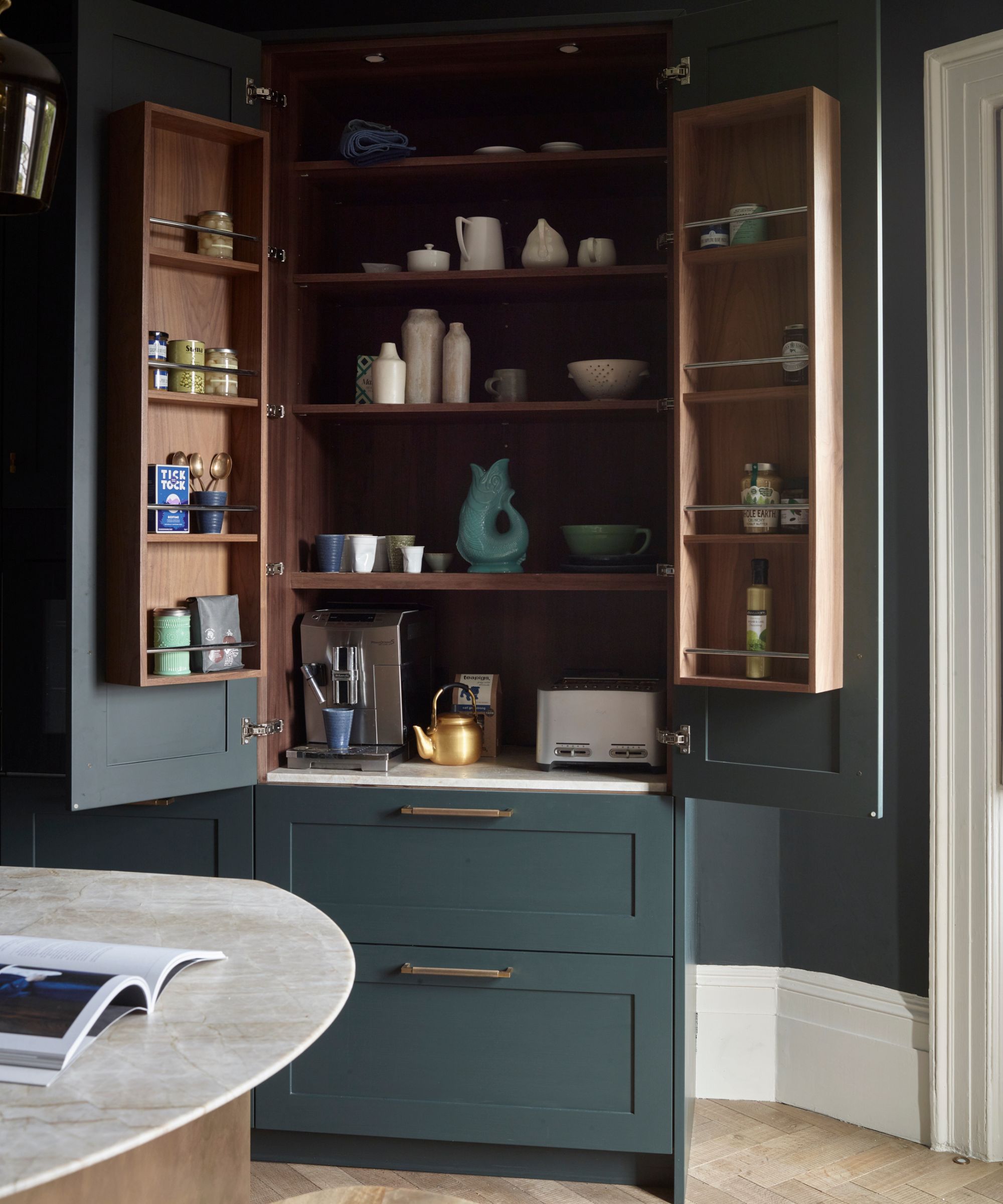
Curves make a space feel more welcoming, plus they are practical because they free up the space that hard corners take up. Curves also soften a space visually, which is a must in a room that's dominated by hard and often shiny surfaces that are the opposite of comforting.
'Hard functional lines are unavoidable in a kitchen space, however there are ways you can incorporate rounded edges to soften the look and feel of the room. This building was originally a ship master's house, dating to the 1700s, which is why the back wall is curved. Sam has designed a rounded bar at the end of the island to mirror the shape of the bay windows,' says Sam.
'Not only does this create an interesting feature, but it’s practical – no bumping into pointed edges as one moves around the room!'
5. Bring in eye-pleasing texture with parquet flooring
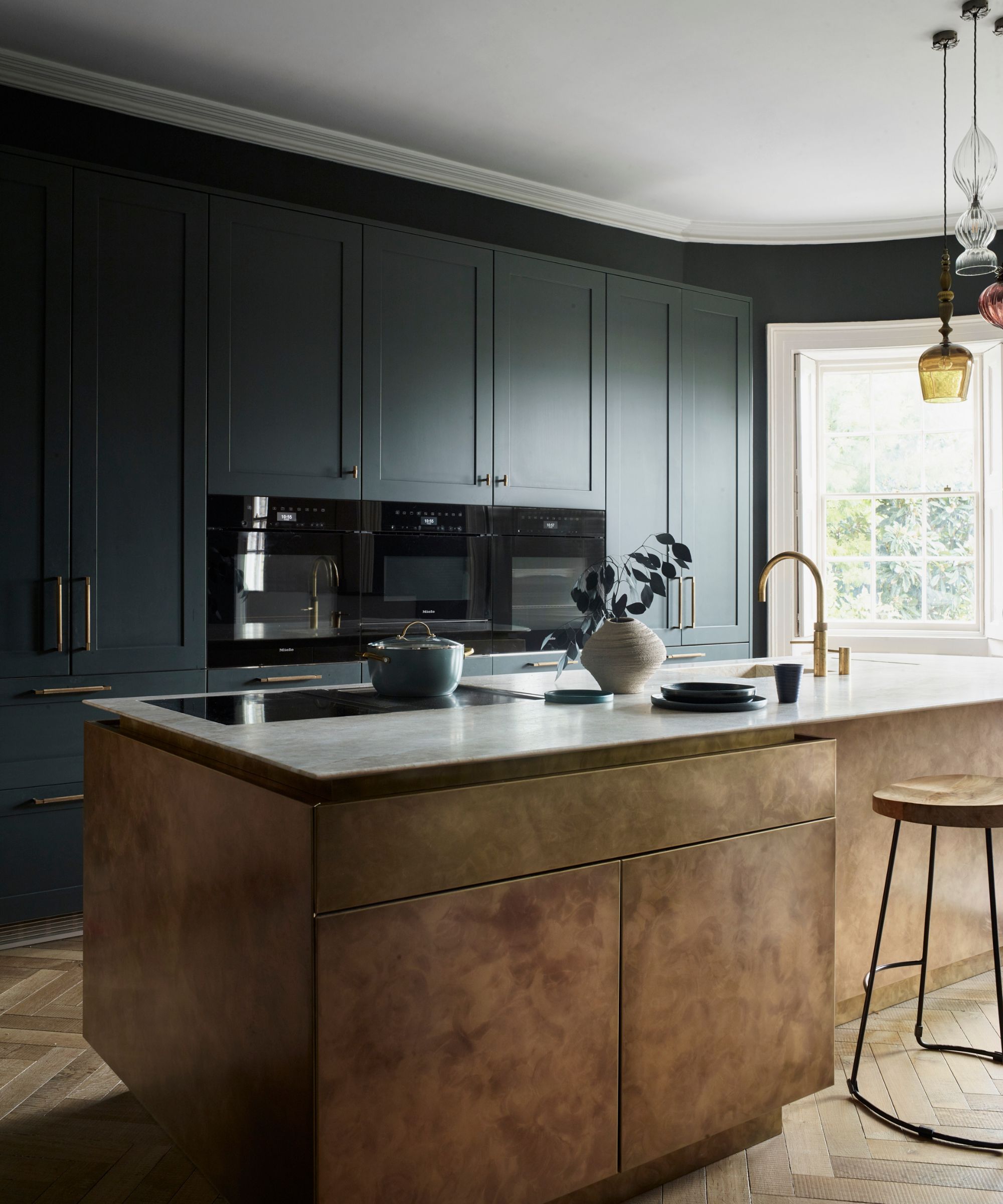
Natural materials, such as wood, always makes a room feel warmer. They cry out to be touched, and again soften those hard, shiny materials so prevalent in kitchen design.
'The beautiful warm wood parquet flooring in this kitchen helps the space to feel more like a room. Gone are the days of clinical tiled flooring in kitchens! The kitchen is often the central hub of the home, with many spending most of their time here – it’s important that they are comfortable spaces that feel like a continuation from the rest of the house,' says Sam.
'Not only does the addition of wood create warmth, but the pattern creates interest and contrast against the other textures in the room such as the brass and veining in the natural stone. It’s a beautiful way of adding interest.'
6. Opt for a closed plan layout
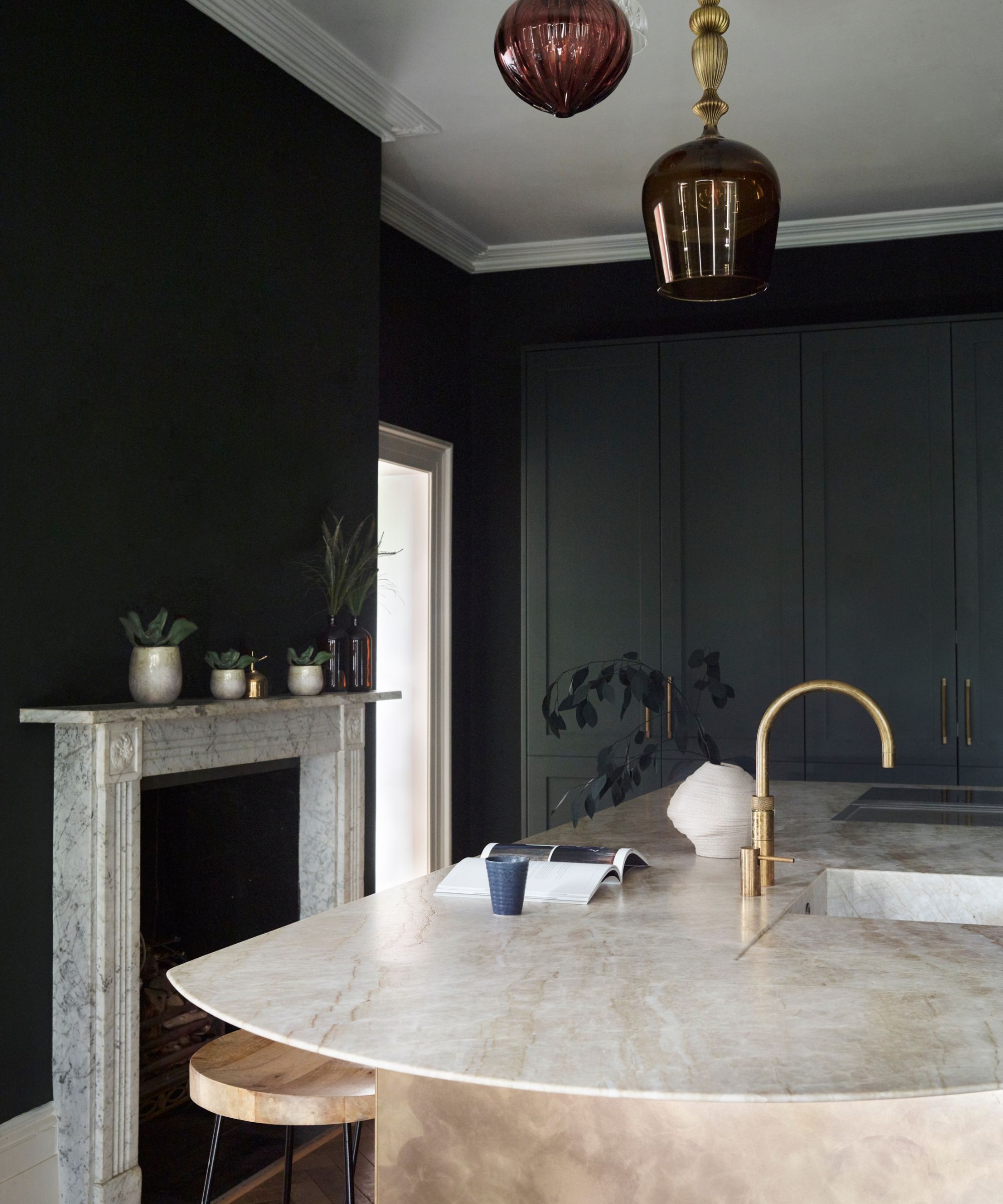
Kitchen layout ideas have flexed fundamentally.
'Open plan kitchens had their moment, however in recent times homeowners have had a change of heart,' says Sam. 'The desire for a kitchen separate from the living space is becoming more and more popular. Those who are a keen cooks wish to try new recipes in peace, and parents that work from home want a quiet space away from the communal family area to catch up on emails.
'The perk of having a separate kitchen space is that the room becomes a retreat of sorts – a place to read a book and have a glass of wine, or read the paper with your morning coffee. Using lavish materials such as patinated brass and natural stone help create a luxurious, serene feel further helping to make the room feel like a sanctuary.'
We can only agree – we think open plan has, to a degree, had its day, though we love the flexibility of broken plan rooms, which offer the best of both worlds, and which can, in many cases be retro-installed.
What is emotional design?
Think about how a beautifully designed room makes you feel: Happy? Inspired? Moved? This is an example of 'emotional design', in other words, design that is created to evoke a response. This needn't be complicated when applied to your own home: just consider what colors, textures and shapes you find pleasing and include them in your rooms, though know that some elements that humans love are universal. For example: darker, warmer colors make us feel cossetted and safe; natural textures are more pleasing to us than man-made; and soft curves are more alluring than hard lines.

Lola Houlton is a news writer for Homes & Gardens. She has been writing content for Future PLC for the past six years, in particular Homes & Gardens, Real Homes and GardeningEtc. She writes on a broad range of subjects, including practical household advice, recipe articles, and product reviews, working closely with experts in their fields to cover everything from heating to home organization through to house plants. Lola is a graduate, who completed her degree in Psychology at the University of Sussex. She has also spent some time working at the BBC.